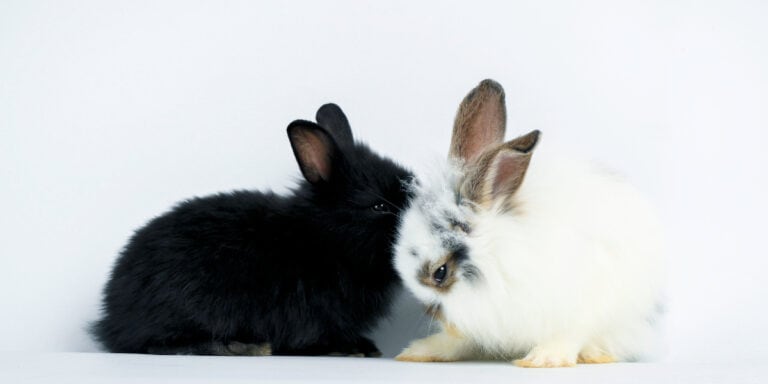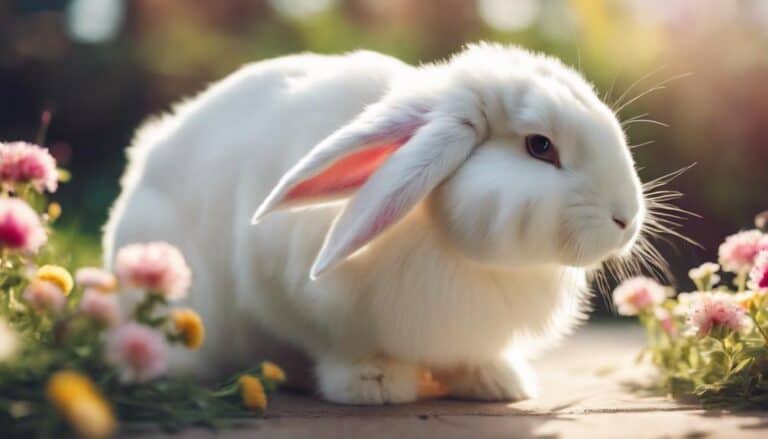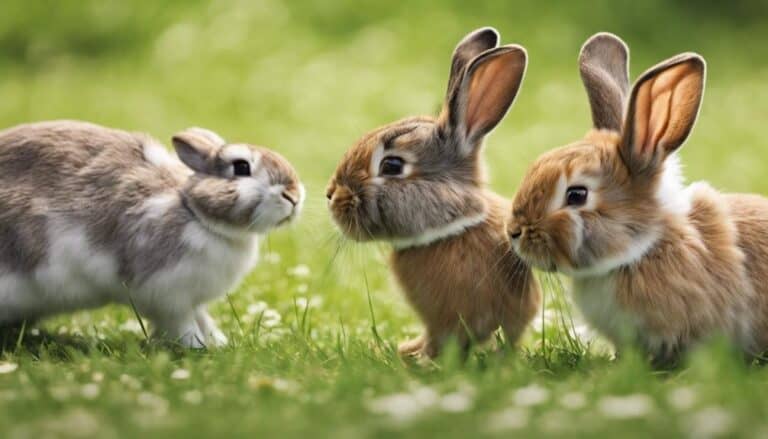You might think that bunnies aren't known for tail wagging, but let's consider this further.
Have you ever noticed subtle movements in your bunny's tail and wondered if there could be more to it?
Understanding the nuances of bunny behavior, especially regarding their tails, can provide valuable insights into their emotions and needs.
Stay tuned to uncover the secrets behind bunny tail wagging and how it can deepen your connection with these adorable creatures.
Contents
Key Takeaways
- Bunny tails can wag, conveying emotions like happiness or warning signals.
- Tail movements vary in frequency and intensity, reflecting the rabbit's emotional well-being.
- Understanding tail language enhances communication and bond with bunnies.
- Deciphering tail wagging helps interpret a rabbit's mood and intentions accurately.
Bunny Tail Anatomy
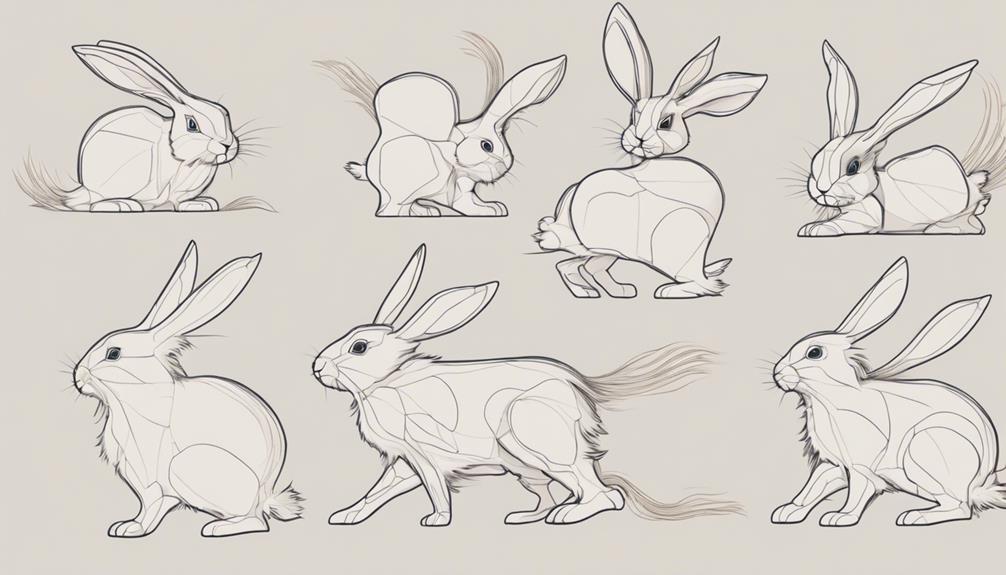
While rabbits are known for their small, fluffy tails, understanding the anatomy of a bunny's tail is essential to appreciating its role in their overall physiology. The best type of tail for a rabbit is one that's short, round, and covered in fur, which aids them in maintaining balance. Unlike dogs, a rabbit's tail isn't as long or prominent and doesn't wag in the same manner. Despite this, the tail of a rabbit plays a critical role in communication, with subtle movements conveying various emotions such as excitement or warning.
Rabbit tails are more about nuanced movements rather than overt wagging. These subtle tail movements are a distinctive feature of rabbit behavior and serve as a form of non-verbal communication. By observing these movements, you can gain insight into a rabbit's emotional state and intentions. Understanding the anatomy of a bunny's tail allows you to better comprehend their behavior and enhances the bond between you and your fluffy companion.
Tail Movements in Bunnies
Observing the subtle movements of a rabbit's tail provides valuable insights into their emotions and communication cues. Tail posture plays an important role in rabbit social interactions. A raised tail can signal excitement or curiosity, while a lowered tail may indicate fear or submission. Tail flicking in rabbits can be stress indicators. If a rabbit is feeling anxious or uncomfortable, they may exhibit rapid tail flicks. Understanding these tail movements can help you gauge your rabbit's emotional state and respond accordingly.
Rabbit tail language is multifaceted and can serve as bonding cues. Owners often describe tail twitching as a sign of excitement or playfulness. Additionally, tail wagging in rabbits can convey happiness or excitement, similar to dogs. Paying attention to the context and frequency of tail wagging can provide valuable insights into your rabbit's behavior and feelings. By interpreting their tail expressions, you can better understand and communicate with your bunny, strengthening your bond and ensuring their well-being.
Communication Through Tail Wagging
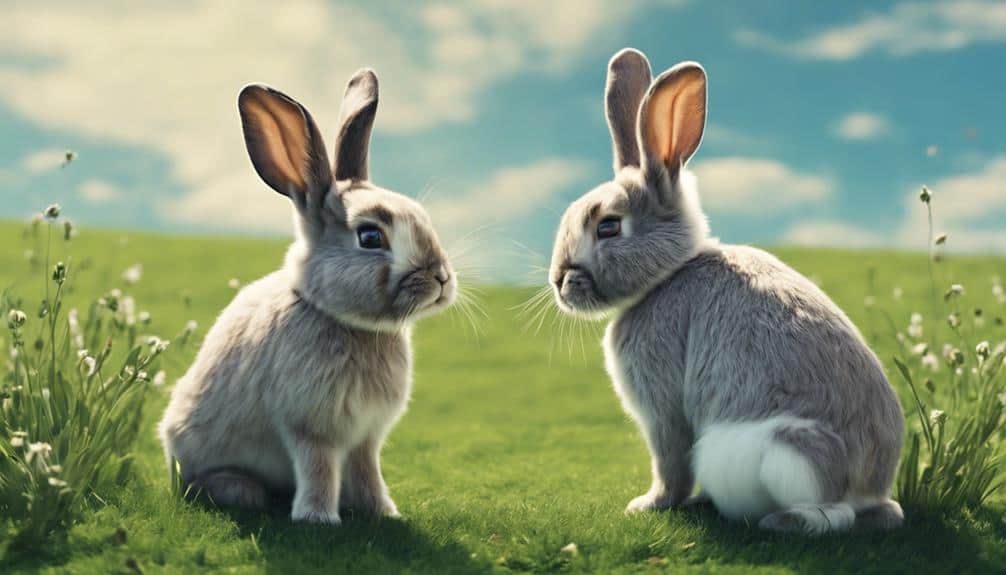
When observing your bunny's tail movements, pay attention to the meanings behind them.
Tail wagging can vary in frequency and can convey a range of emotions from happiness to warning signs.
Tail Wagging Meanings
Rabbit tail wagging serves as a key form of non-verbal communication, conveying a range of emotions from happiness to potential aggression. Understanding the nuances of tail signals, emotional cues, and wagging interpretations can help you decipher what your bunny is trying to express. Below is a table summarizing the different meanings behind rabbit tail wagging:
| Tail Signals | Emotional Cues |
|---|---|
| Rapid wagging | Excitement or happiness |
| Slow, deliberate | Potential aggression or warning |
| Stiff, upright | Defiance or aggression |
Tail Wagging Frequency
To understand the nuances of rabbit communication, it's important to explore the frequency of tail wagging as a key indicator of their emotional state.
- Tail wagging patterns: Rabbits exhibit various tail wagging patterns that can convey different messages.
- Emotional tail cues: The frequency of tail wagging in rabbits can provide cues about their emotional well-being.
- Tail language interpretation: Observing how often a rabbit wags its tail can help interpret its mood and intentions.
- Communication insights: Understanding the significance of tail wagging frequency is significant for deciphering a rabbit's communication style accurately.
Tail Wagging Emotions
Exploring the emotional nuances of rabbit communication through tail wagging reveals insights into their well-being and intentions.
Tail wagging expressions in rabbits serve as emotional cues, conveying feelings of happiness, excitement, and contentment. This form of tail wagging communication is essential for social signals among rabbits, indicating positive responses to interactions, activities, treats, or playtime.
By understanding the context and accompanying body language, you can interpret a rabbit's emotional state accurately. Observing tail wagging interpretations provides valuable behavioral insights, allowing you to gauge a rabbit's comfort and overall satisfaction.
Paying attention to these subtle cues enables you to better serve and care for your rabbit, enhancing your bond and communication with these delightful animals.
Tail Wagging Vs. Other Behaviors
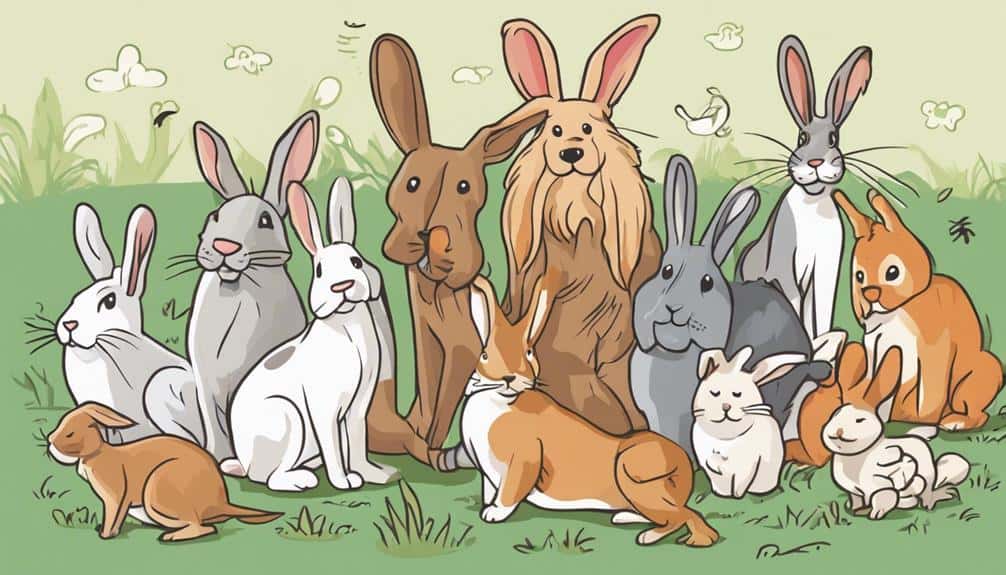
When observing your bunny's behavior, tail wagging can convey various emotions and messages, similar to other non-verbal cues. Understanding these behaviors can help you better communicate with your furry friend. Here are some comparisons between tail wagging and other rabbit behaviors:
- Tail Flicking, Tail Thumping: While tail wagging usually signifies positive emotions, tail flicking or thumping can indicate agitation, annoyance, or a warning to back off.
- Ear Positioning, Body Language: Pay attention to your bunny's ear positioning and overall body language when interpreting tail wagging. Ears laid flat or a tense body may suggest discomfort or fear despite a wagging tail.
- Vocalizations, Social Interactions: Combining tail wagging with vocalizations like purring or grunting can signify contentment, while tail wagging during social interactions, such as grooming or nuzzling, indicates bonding and affection.
Factors Influencing Tail Wagging
Tail wagging in rabbits can be influenced by various factors, including their emotional state and environmental stimuli. Rabbits may wag their tails in response to triggers such as happiness, excitement, or encountering new stimuli.
This behavior pattern can vary among individual bunnies, with some wagging their tails as a form of communication during social interactions. In certain situations, tail wagging may indicate defiance or serve as a warning signal.
Understanding these variations in tail wagging and the accompanying body language is essential for interpreting a rabbit's mood accurately. When observing your bunny's tail behavior, consider the context and any environmental factors that may be contributing to their emotional responses.
Observing Your Bunny's Tail Behavior
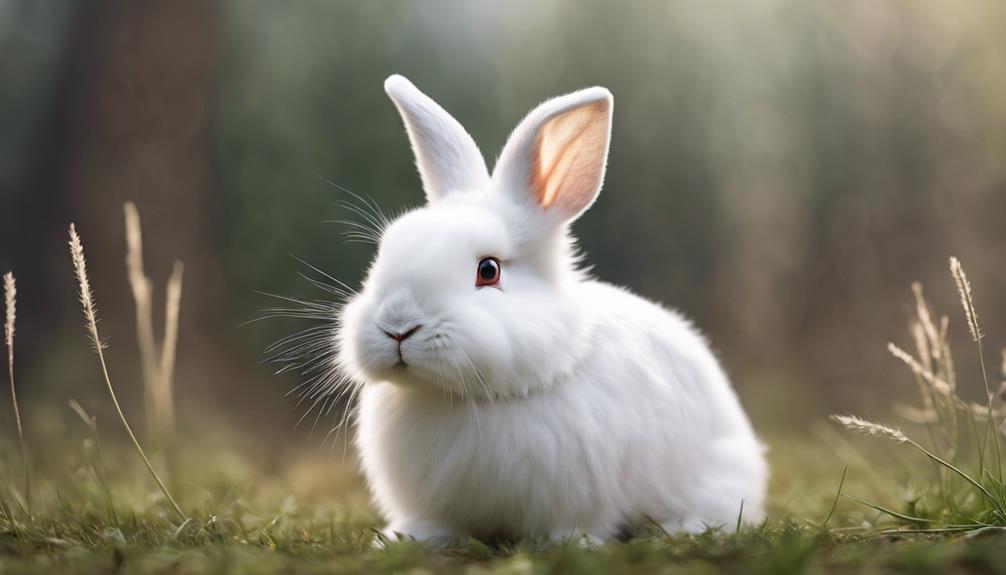
When observing your bunny's tail behavior, pay close attention to how it wags, as it can convey different emotions. The speed and intensity of the tail wagging provide valuable cues about your bunny's mood.
Additionally, consider the context, body language, and vocalizations accompanying the tail movements to better understand your rabbit's feelings.
Tail Wagging Behavior
Observing how your bunny's tail moves can offer valuable insights into their emotional well-being and communication cues. When it comes to tail wagging behavior in rabbits, there are a few key points to take into account:
- Tail wagging frequency: Pay attention to how often your bunny wags its tail as it can indicate different emotions.
- Tail wagging gestures: The way your bunny wags its tail, whether in big sweeps or small twitches, can convey varying messages.
- Tail wagging misconceptions: While tail wagging can signify happiness, it can also indicate defiance or even a warning signal.
- Tail communication cues: Understanding your bunny's tail movements can help you better connect with them and respond to their needs effectively.
Tail Language Meanings
To gain deeper insights into your bunny's emotional state and communication cues, paying attention to the subtle movements of their tail can be highly informative. Tail language interpretation is vital for understanding your rabbit's feelings and strengthening the bond between you.
A wagging tail often signifies happiness, excitement, or contentment in rabbits. Conversely, a twitching tail may indicate defiance, warning, or discomfort. By observing the speed and intensity of tail movements, you can better interpret your rabbit's mood and respond accordingly.
Remember to consider your bunny's overall body language when deciphering tail behavior, as this holistic approach enhances communication and fosters a deeper connection with your furry companion. Mastering tail communication can lead to a happier and more fulfilling relationship with your bunny.
Tail Position Signals
Your bunny's tail position serves as a direct indicator of their current mood and emotional state. Observing your bunny's tail behavior can provide valuable insights into their feelings. Here are some key points to help you understand your bunny's tail signals:
- Tail position can act as happiness indicators, with a raised tail often suggesting a content and relaxed bunny.
- Excitement cues may be evident through rapid tail movements or hopping with the tail held high.
- Defiant emotions might be displayed by a lowered or tucked tail, indicating fear or discomfort.
- Subtle tail movements can convey a range of emotions, so paying attention to these details can enhance your bond with your bunny.
Frequently Asked Questions
What Do Bunnies Do When They're Happy?
When you see bunnies expressing happiness, they exhibit joy through binkying, bunny flops, and happy hops. Observing their behavior, especially tail wagging, can help you understand the contentment and joy they're experiencing.
Do Bunnies Tails Move?
Bunnies' tails move to convey their emotions and communicate with you. Understanding their tail language helps interpret their behavior. While not like wagging dogs' tails, bunnies' tail movements reflect various feelings, so context matters in decoding their messages.
Why Is My Bunny's Tail Twitching?
When your bunny's tail twitches, it might be conveying stress signals, indicating health concerns, or just displaying normal behavior. Understanding these cues can help you nurture a stronger bond with your furry friend.
Why Is My Rabbit Chasing His Tail?
When your rabbit chases its tail, it could be due to boredom, excess energy, a grooming behavior, or an underlying medical issue like parasites. Providing enrichment, toys, and exercise can help reduce tail chasing. If it persists, consult a vet.
Conclusion
Congratulations! You now possess the secret knowledge of decoding your bunny's emotions through their tail wagging. By understanding this subtle form of communication, you're one step closer to forming a stronger bond with your furry friend.
So, observe closely, pay attention to those tail movements, and get ready to dive deep into the world of bunny emotions like never before! Enjoy the journey of connecting with your bunny on a whole new level.


